The Gunfight at the OK Corral is certainly the most famous shootout of the Old West. This event has been the subject of numerous books and movies, some of them becoming Western classics like the movie “Tombstone”.
However, most films about the gunfight fail to fully capture the extent of the feud between the Earps and the Cowboys, as well as the dramatic events unfolding in and around the silver boomtown of Tombstone—events that ultimately fueled the conflict.
Note: the Gunfight at the OK Corral did not actually take place at the OK Corral, but rather at a spot nearby in Tombstone. The location of the gun battle was incorrectly identified as the OK Corral in early books and films, and the shootout became known by that name.
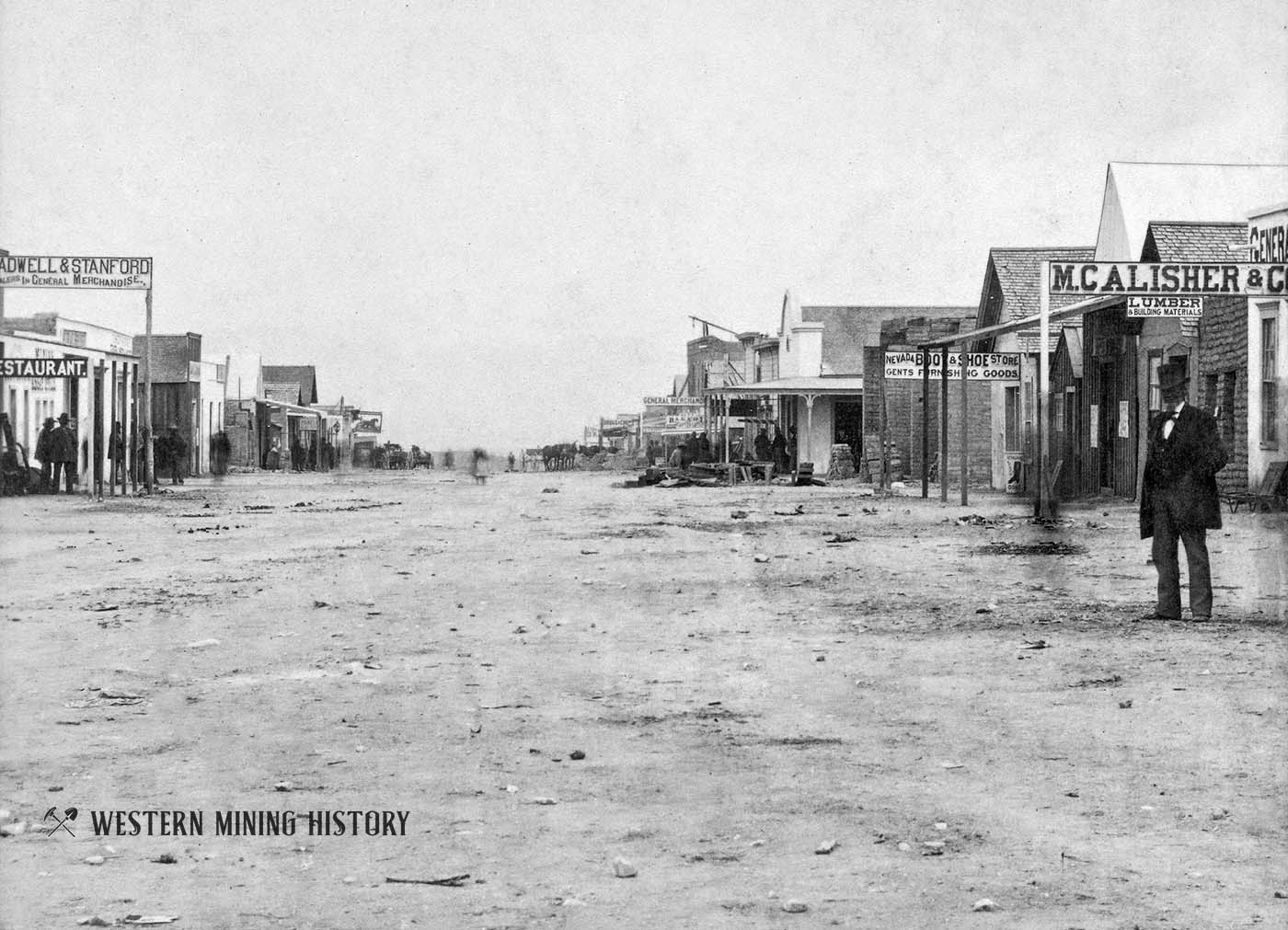
What is often overlooked is that the Earps had been in Tombstone for nearly two years before the Gunfight at the O.K. Corral took place. During that time, the town transformed from a tent settlement of a few hundred into the largest city in the territory, with a population exceeding 7,000. The district’s mines proved highly productive, and satellite towns emerged to serve as ore-processing centers and hubs for transportation and supplies.
Prior to the discovery of silver, the outlaws in the area held power over their territory, and for the most part conducted their criminal activities with impunity. However, the influx of thousands of miners and related business interests brought federal lawmen to the area. Since many local lawmen were often aligned with the outlaw gangs, the arrival of federal marshals sparked conflict not only with the outlaws but also with the local sheriffs.
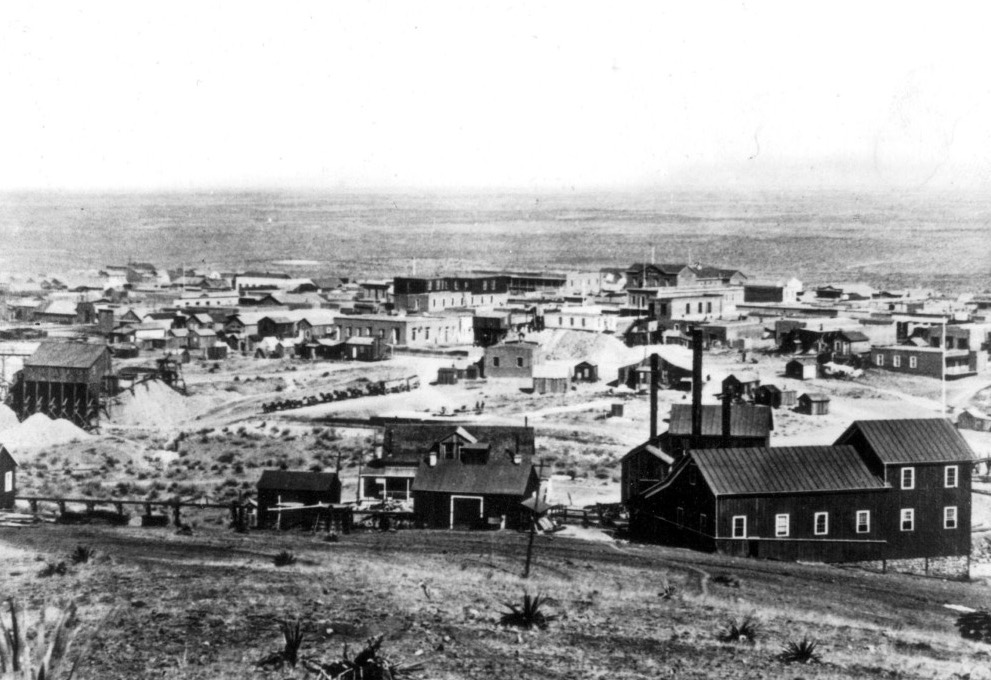
The story of Tombstone and the Gunfight at the O.K. Corral is long and complex. This article outlines the key events and offers context for where they occurred in relation to the surrounding mines and boomtowns.
Part I: The Gunfight
The mining town of Tombstone was founded in the spring of 1879 following significant silver discoveries in the area. The mines proved exceptionally rich, drawing a flood of fortune seekers to what had previously been a sparsely populated frontier dominated by Apache tribes and outlaw gangs.
On the map below, click the markers to view details on some of the key events from this story.
December 1, 1879
James, Virgil, and Wyatt Earp arrived in Tombstone while it was still a fledgling mining camp with a population of only a few hundred. Most residents were living in canvas tents. Virgil had been appointed Deputy U.S. Marshal for eastern Pima County, and in June 1881, he also became Tombstone’s town marshal.
September 1880
Doc Holliday, noted gunman and friend of Wyatt Earp, joined the Earps in Tombstone.
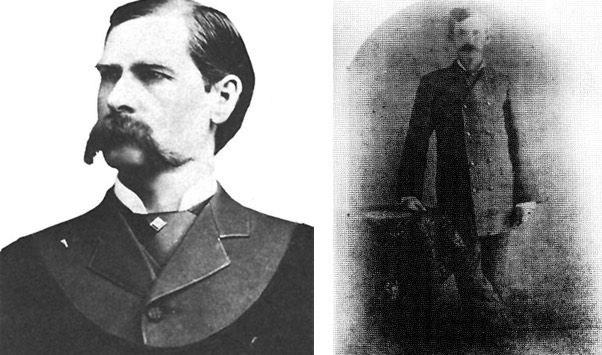
1881
By 1881, Tombstone had grown to over 7,000 residents, making it the largest settlement in the Arizona Territory.
Horse rustlers and bandits from the countryside often came to town, and shootings were frequent. During this time, illegal smuggling and theft of cattle, alcohol, and tobacco across the Mexico–United States border, about 30 miles from Tombstone, were common.
The Earps quickly found themselves in conflict with Frank and Tom McLaury, Billy and Ike Clanton, Johnny Ringo, and William “Curly Bill” Brocius, and others. These men were part of a loosely organized group of cattle smugglers and horse thieves known as the Cowboys–outlaws who had been linked to numerous crimes in the region. Ike Clanton was prone to drinking heavily and threatened the Earp brothers on numerous occasions.
The Cowboys were believed to be based out of the Clanton’s ranch, south of Charleston.
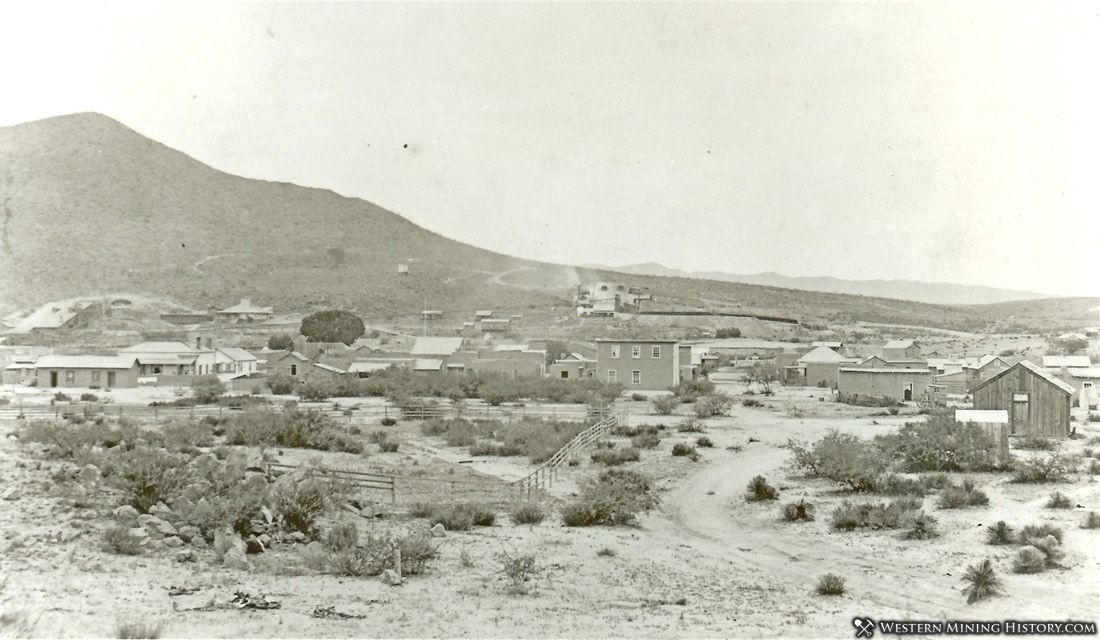
March 15, 1881
A stagecoach loaded with silver bullion was robbed by Cowboys outside of Contention City. In the ensuing gunfight, two passengers of the stage were killed, and one Cowboy was injured. Despite losing two of the three men on board, the stagecoach escaped the ambush.
Wells Fargo offered a $3,600 reward for the capture of the robbers—dead or alive. One of the suspects, Luther King, was apprehended but quickly escaped from jail. The Earps formed a posse with famed lawman Bat Masterson and two others. They pursued the stage robbers for weeks, covering hundreds of miles, but made no additional arrests.
August 1881
The Cowboys ambushed and killed 15 Mexicans traveling through Guadalupe Canyon (later called Skeleton Canyon) on their way to purchase supplies in the Tombstone district. The attack heightened tensions between the Earps and the outlaws.
September 8, 1881
A passenger stagecoach bound for Bisbee was robbed by the Cowboys. Wyatt and Virgil Earp rode with a sheriff’s posse to track the Bisbee stage robbers. Frank Stilwell and Pete Spence were arrested in Bisbee for their role in the robbery. Following the arrests, Frank McLaury of the Cowboys confronted Morgan Earp and insinuated that the Earps would be killed if they attempted to make additional arrests.
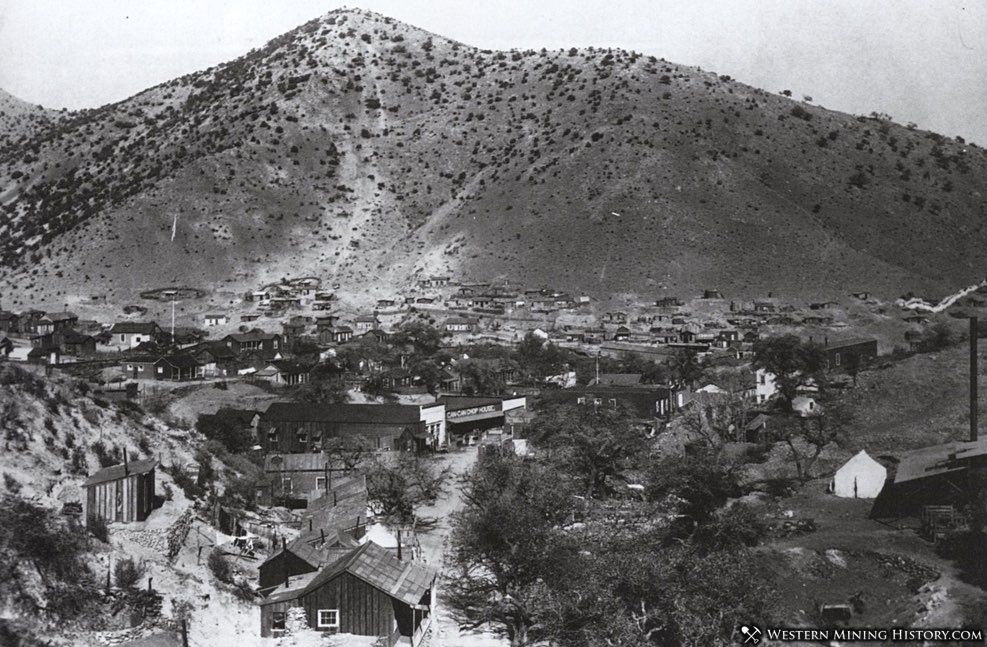
October 26, 1881
The infamous “Gunfight at the O.K. Corral” occurred on October 26, 1881, a 30-second shootout between the Cowboys on one side and the Earp brothers and Doc Holliday on the other.
The night before the gunfight, Ike Clanton got into a heated argument with Doc Holliday. After the Earps intervened in the argument, Ike threatened them saying “You must not think I won’t be after you all in the morning.” Ike then sat down to an all-night card game with Virgil Earp, County Sheriff Johnny Behan, and Tom McLaury.
It is interesting to note that despite the hostilities between the outlaws and the lawmen, they would all sit together for a night of drinking and cards.
The card game broke up at dawn. Ike, who had been up all night drinking, had nowhere to go. He continued to wander the town, making threats against the Earps, while armed in violation of a Tombstone ordinance that required all firearms to be checked into a livery or saloon upon entering town.
At around 1:00 pm, Morgan and Virgil Earp pistol whipped Ike from behind, and subsequently disarmed him. Ike was taken to the courthouse to appear before a judge for violating the firearms ordinance.
Outside the courthouse, Wyatt encountered Tom McLaury and demanded to know if he was armed. McLaury said he was not, but Wyatt could see a gun tucked into his pants so he pistol whipped him twice and left him bleeding in the street.
A short time later, Ike’s 19-year-old younger brother Billy Clanton and Tom’s older brother Frank McLaury arrived in town to back up Ike and Tom. A witness later told the The Tombstone Epitaph:
I was in the O.K. Corral at 2:30 p.m. when I saw the two Clantons and the two McLaurys in an earnest conversation across the street at Dunbar’s corral. I went up the street and notified Sheriff Behan and told them it was my opinion that they meant trouble, and it was his duty, as sheriff, to go and disarm them. I told him they had gone to the West End Corral. I then went and saw Marshal Virgil Earp and notified him to the same effect.
Virgil decided to disarm the Cowboy’s and enlisted the help of his brothers Morgan and Wyatt, and Doc Holliday. Virgil gave Holliday a double-barreled shotgun he had retrieved from the Wells Fargo office.
On their way to confront the outlaws, County Sheriff Behan (know to be friendly with the Cowboys) attempted to dissuade the Earps from confronting the men, stating that he had already disarmed them. Virgil decides to talk to the Cowboys anyway, and the stage is set for the fight.
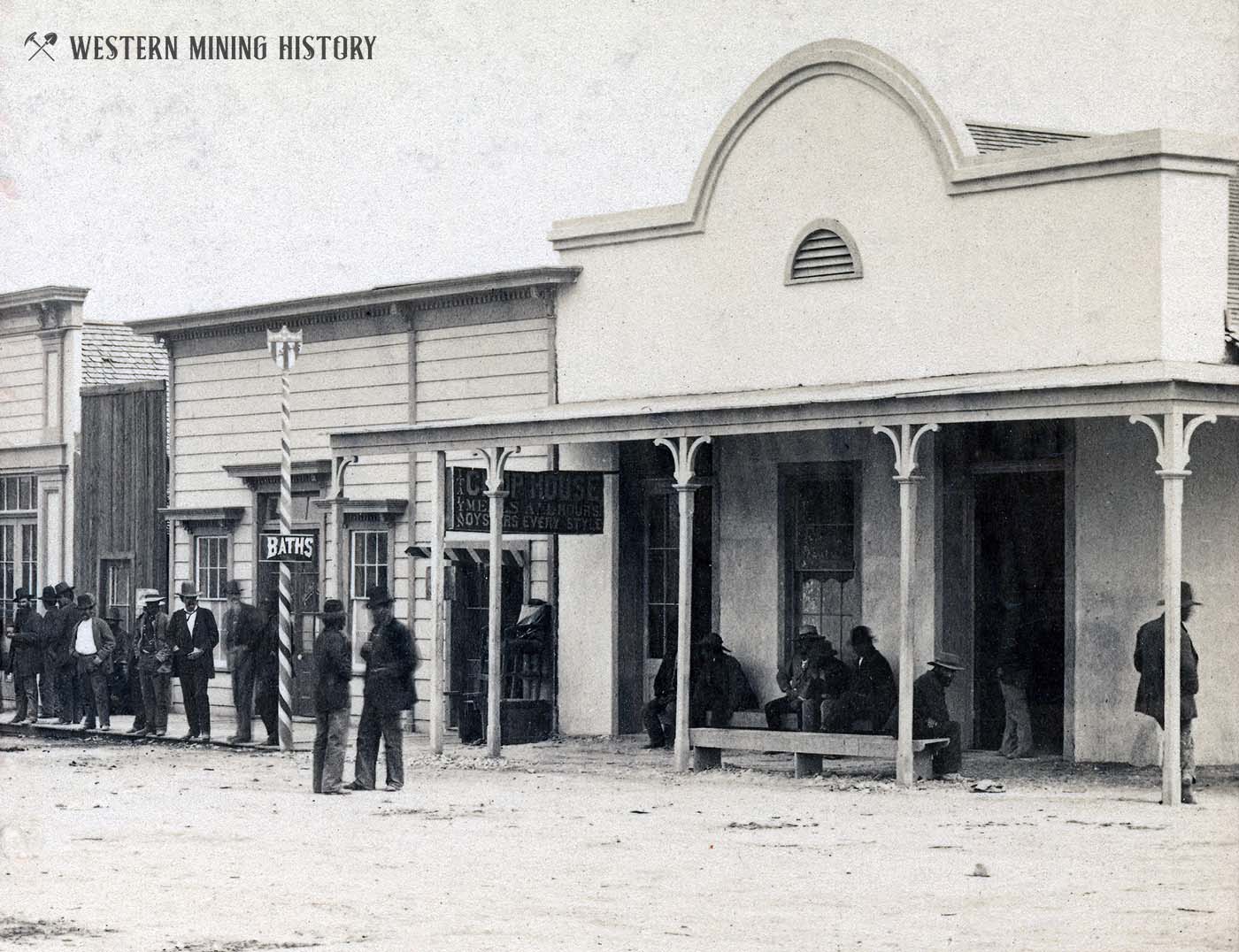
Because of the lie Behan told them about disarming the outlaws, the Earps were not expecting a fight. Rather than entering the confrontation with their weapons ready, they had put them away, placing themselves at an initial disadvantage.
When the Earps approached the lot, the four lawmen were facing six Cowboys: Frank McLaury, Tom McLaury, Ike Clanton, Billy Clanton, Wes Fuller, and Billy Claiborne.
When Virgil saw the Cowboys, he immediately ordered, “Throw up your hands, I want your guns!” Ike Clanton, Wes Fuller and Billy Claiborne fled the scene. Frank McLaury and Billy Clanton drew and cocked their six-shooters. The battle began, and Wyatt would later testify:
Billy Clanton leveled his pistol at me, but I did not aim at him. I knew that Frank McLaury had the reputation of being a good shot and a dangerous man, and I aimed at Frank McLaury. The first two shots were fired by Billy Clanton and myself, he shooting at me, and I shooting at Frank McLaury.
Clanton missed, but Earp shot Frank McLaury in the stomach. Doc Holliday then raised his shotgun from under his long coat, stepped around Tom McLaury’s horse, and shot Tom in the chest at close range. Tom died moments later.
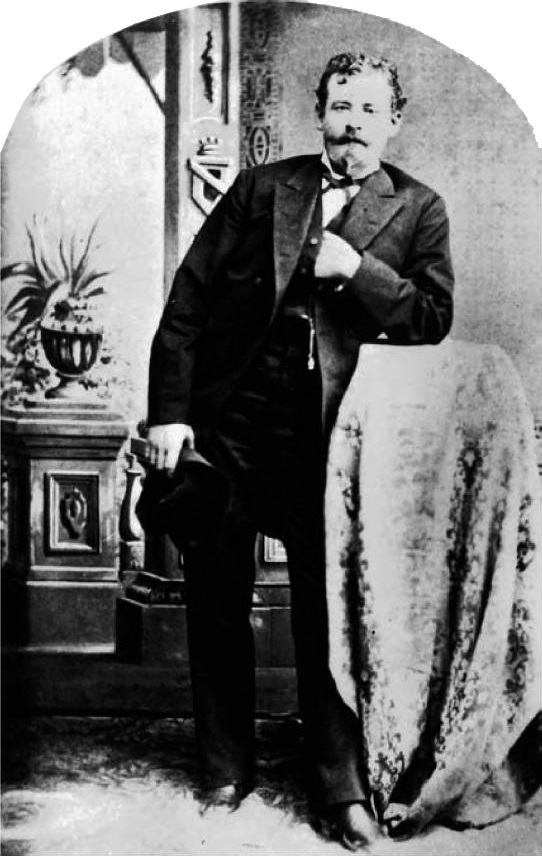
Billy Clanton opened fire and was shot in the wrist by Morgan Earp. Despite being injured, both Billy and Frank continued shooting. Frank grazed Doc Holliday’s hip, inflicting only a minor wound. Holliday charged toward him, shouting, “That son of a bitch has shot me, and I am going to kill him.”
At this point, the fight descended into chaos, and it has never been definitively established who fired the shots that killed or wounded the gunmen. Either Billy or Frank fired the shot that struck Morgan Earp in the back. Frank McLaury was killed by a bullet to the head, likely fired by either Morgan or Doc Holliday. Billy Clanton was shot in the chest and abdomen and later died from his wounds. One of the Cowboys—either Frank or Billy—also shot Virgil Earp in the calf.
The gunfight lasted just 30 seconds, during which approximately 30 shots were fired. Tom McLaury, Frank McLaury, and Billy Clanton were killed. Virgil Earp, Morgan Earp, and Doc Holliday were wounded, while Wyatt Earp emerged from the shootout unscathed.
While the Gunfight at the O.K. Corral marked the climax of the conflict between the Earps and the Cowboys, the saga did not end there. The events continued to unfold over the next six months.
Part II: The Aftermath
After the gunfight, the bodies of the slain Cowboys were displayed in a window at a local undertaker’s, beneath a sign that read: “Murdered in the Streets of Tombstone.” Contrary to many film portrayals of the Gunfight at the O.K. Corral, the Cowboys had a measure of popular support, and the Earps were not universally liked. Several hundred people joined the funeral procession, while as many as 2,000 watched from the streets.
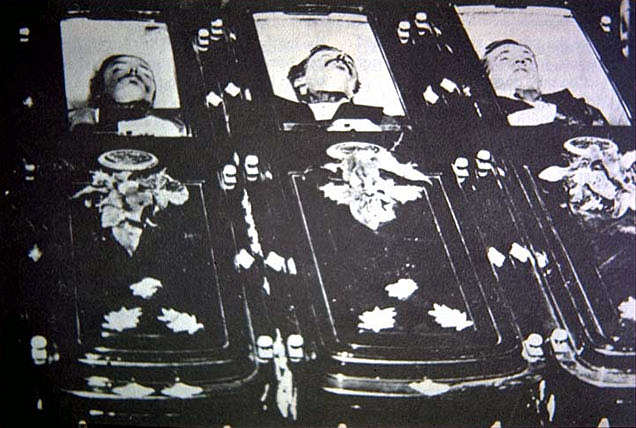
October 30, 1881
Despite months of threats from the Cowboys, Ike Clanton succeeded in filing murder charges against the Earps following the gunfight. Due to injuries sustained in the shootout, Virgil and Morgan Earp were unable to appear in court. As a result, only Wyatt Earp and Doc Holliday were arrested and held for 16 days during the preliminary hearing.
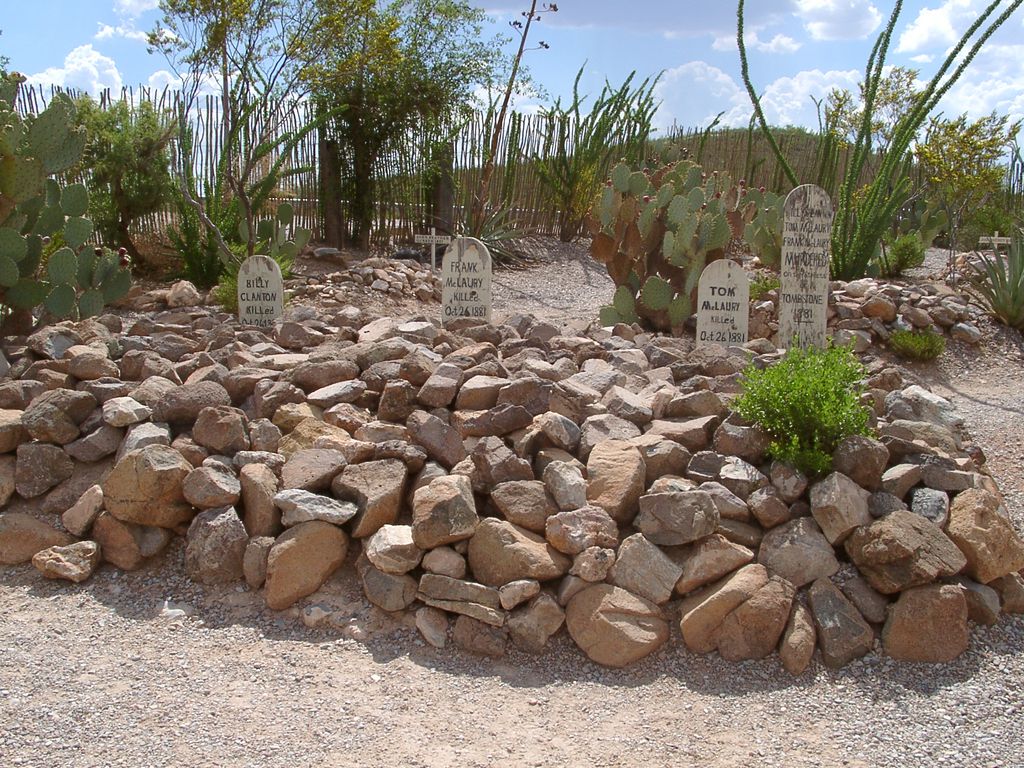
The hearing concluded on November 30, with Justice Spicer ruling that the Earps and Doc Holliday had not violated the law in the events leading up to—or during—the gunfight.
December 1881
Ike Clanton once again filed murder charges against the Earps, this time in nearby Contention City. Fearing an ambush, a large posse escorted the Earps to their court appearance. The charges were quickly dismissed.

December 14, 1881
Justice Spicer received anonymous death threats and was ordered to leave town. Tombstone mayor John Clum, who had been a supporter of the Earps, was the target of a murder attempt.
December 28, 1881
Virgil Earp was ambushed and hit in the left arm with a shotgun blast. The wound is serious, and Virgil must carry the arm in a sling for the rest of his life. The following day, Wyatt Earp was appointed as Deputy U.S. Marshal for eastern Pima County.
January 25, 1882
Wyatt led a posse to Charleston in search of Virgil’s assailants. Upon returning to Tombstone, they discovered that several Cowboys had turned themselves in—though only on lesser charges—apparently hoping to avoid the posse’s pursuit. The charges were later dropped due to a lack of evidence.
Februrary 9, 1882
Ike Clanton once again filed charges against the Earps in Contention City. Fearing a Cowboy ambush, the Earps traveled under heavy guard. However, the judge refused to indict them, citing the lack of new evidence.
Virgil Earp was no longer receiving a salary, and for increased security, the Earp brothers and their wives had been staying at the Cosmopolitan Hotel since the gunfight. Strapped for cash, Wyatt took out a mortgage on his house but ultimately lost it when he defaulted on the loan.
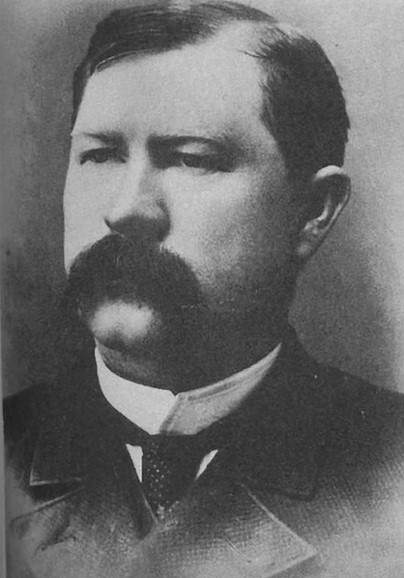
March 18, 1882
While playing a late round of billiards, shots were fired through the window of the billiard hall, striking Morgan Earp in the spine. He died from his wounds less than an hour later.
Pete Spence, a Cowboy suspected of involvement in Morgan’s murder, turned himself in to Sheriff Behan, presumably seeking protection in Behan’s jail. However, the charges against Spence were dropped due to a lack of evidence. Doc Holliday later stated that he held Behan responsible for Morgan Earp’s assassination.
March 21, 1882
Wyatt learns that Frank Stilwell, Ike Clanton, and two other Cowboys are lying in wait at the Tucson railroad station, intending to kill Virgil Earp as he departs Tombstone for California. In response, Wyatt assembles a posse consisting of Warren Earp, Doc Holliday, “Turkey Creek” Jack Johnson, and Sherman McMaster to escort Virgil and his wife, Allie, to the railhead in Benson. Armed with pistols, rifles, and shotguns, they board the train to Tucson alongside Virgil and Allie.
Upon arriving in Tucson, the Earp posse spots Stilwell and the other Cowboys. “Almost the first men we met on the platform were Stilwell and his friends, armed to the teeth,” Virgil later recounted to the San Francisco Examiner. The Cowboys initially withdraw upon seeing the posse, but return later to finish the job. This time, they are met with gunfire from the Earp posse, and Frank Stilwell is killed.

The Tucson sheriff issued arrest warrants for Wyatt and Warren Earp, Holliday, McMaster, and Johnson for the death of Frank Stilwell.
Following the events in Tucson, Wyatt concluded that they would receive no justice from the courts and decided it was time to take the law into their own hands. However, Wyatt would not be alone in this pursuit, as federal assistance became available amid growing dissatisfaction with the lawlessness in the Tombstone area.
With funds now available to hire more men, Wyatt and Warren Earp, Doc Holliday, Johnson and McMaster are now joined by “Texas Jack” Vermillion, Dan Tipton, Charlie Smith, Fred Dodge, Johnny Green, and Louis Cooley to form a federal posse under Wyatt’s authority as the Deputy US Marshal.
March 22, 1882
County sheriff Behan formed his own posse consisting of many deputized cowboys, including Johnny Ringo, Phineas Clanton, Johnny Barnes and about 18 more men. The posse rode out to arrest Wyatt and his men for the murder of Frank Stilwell.

That morning, Earp’s posse locates and kills wanted cowboy “Indian Charlie” Cruz.
March 24, 1882
The Earp posse unknowingly rode into a Cowboy camp at Iron Springs. Outnumbered six to nine, both sides were caught by surprise, and gunfire erupted almost immediately. Curly Bill fired at Wyatt but missed. Wyatt returned fire, hitting Bill in the chest with a shotgun blast and killing him instantly.
Amid the chaos, members of the Earp posse were pinned down by Cowboy gunfire. Wyatt, standing exposed in the middle of the fight, shot Johnny Barnes in the chest and Milt Hicks in the arm. He then managed to mount his horse and retreat. Remarkably, despite being shot seven times through his clothes, Wyatt was unharmed.
March 25, 1882
Sheriff Behan again rode out with a 25-man posse in pursuit of the Earp’s posse. He chased them for ten days, but was unable to locate them.
Epilogue
The true story Wyatt Earp’s vendetta ride is much less spectacular than movies like Tombstone have portrayed. After killing “Indian Charlie” Cruz and Curly Bill Brocius, it seems that Wyatt considered his brother’s avenged, or maybe he was well aware of how lucky they had all been over the last few days.
Whatever the reason, the Earp Posse left Arizona and hid out in New Mexico for several weeks. Near the end of April, the posse split up, and Wyatt and Doc left the lawless territory behind permanently.
Wyatt Earp: A Mining Town Odyssey
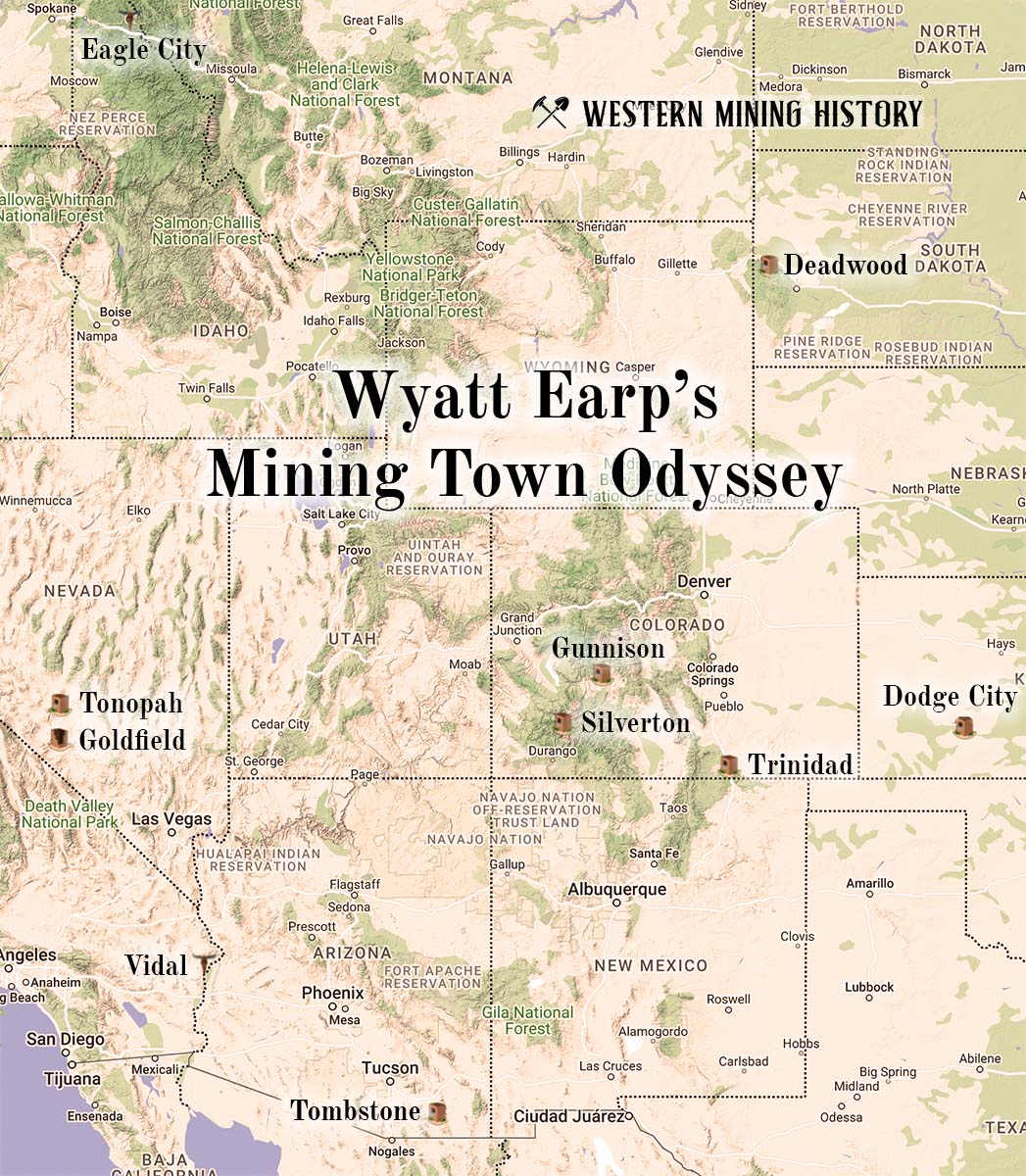
Wyatt Earp spent most of his adult life moving between numerous gold rushes and mining excitements. In 1905 a newspaper described his wanderlust: “wherever was a new gold camp, a new oil field, a new place in which money was plentiful, there could be found Wyatt Earp, quiet, careful, but deadly in his own defense.” Read more…